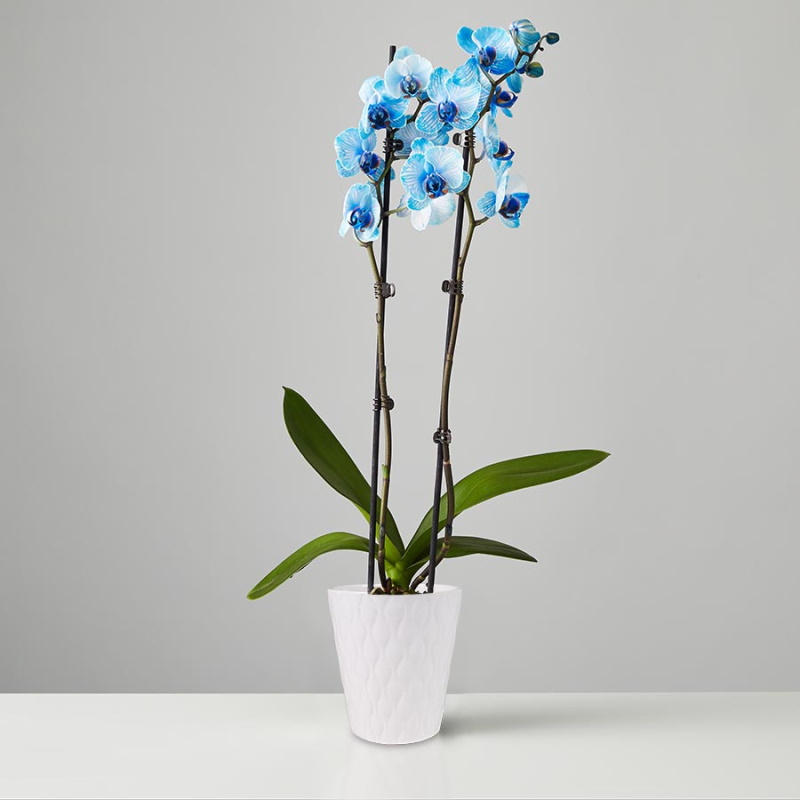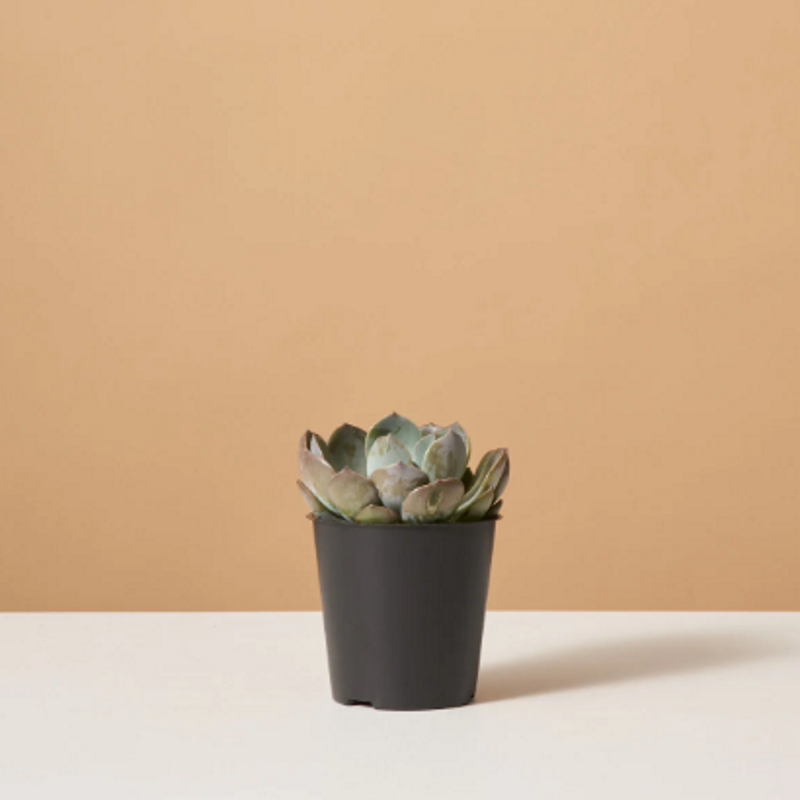Best blue houseplants – to create a calm indoor environment
Psychologists say that blue houseplants can bring a sense of safety and abundance to your home
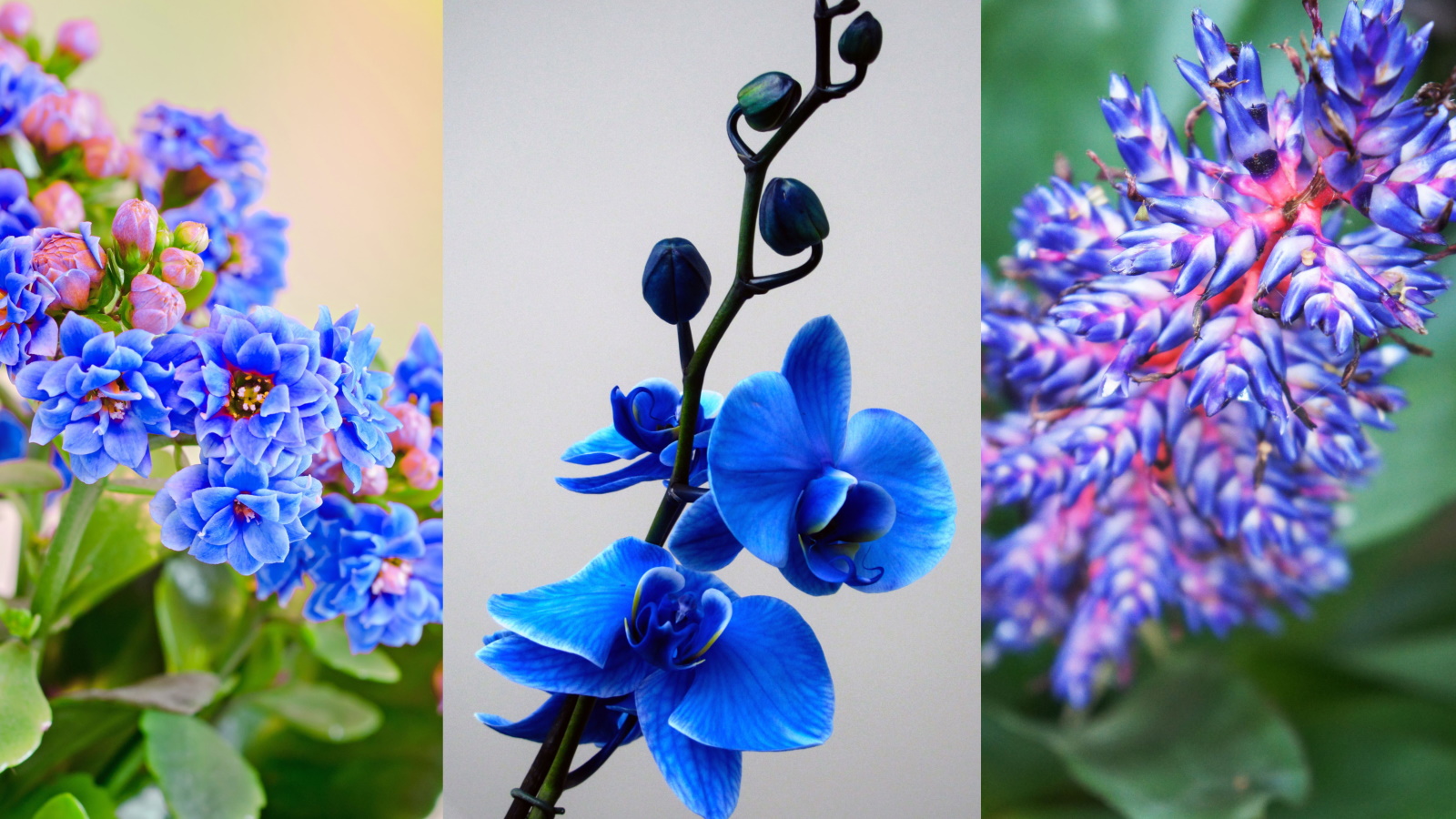

There's no doubt that indoor plants can bring us a whole host of benefits. Some houseplants help with sleep while others are air purifying and help keep your home feeling fresh.
Well, psychologists say that choosing houseplants of different colors can help evoke different emotions - and blue is the perfect choice for creating a calm indoor environment.
'In the world of psychology and color theory, blue is often linked to feelings of calm, relaxation, and stability,' says Dr. Deborah Gilman, a psychologist at Fox Chapel Psychological Services.
'This association is deeply rooted in our evolutionary past, where clear blue skies and calm waters signalled safety and abundance. The gentle, cool tones of blue are believed to have a physiological effect, slowing heart rates and promoting a sense of tranquillity,' she adds.
We've spoken to experts to find out more about the effect of choosing blue tones when decorating your home with plants, and what the best blue plants are for creating a calm indoor environment.


Dr. Gilman is a licensed psychologist, child specialist, coach, and dynamic speaker. She has special expertise working with children, adults, families, schools, businesses, communities, and other organizations impacted by trauma. Dr. Gilman's trauma-informed services are built on the best evidence available to promote engagement, empowerment, and collaboration.
Why is blue a calm color?
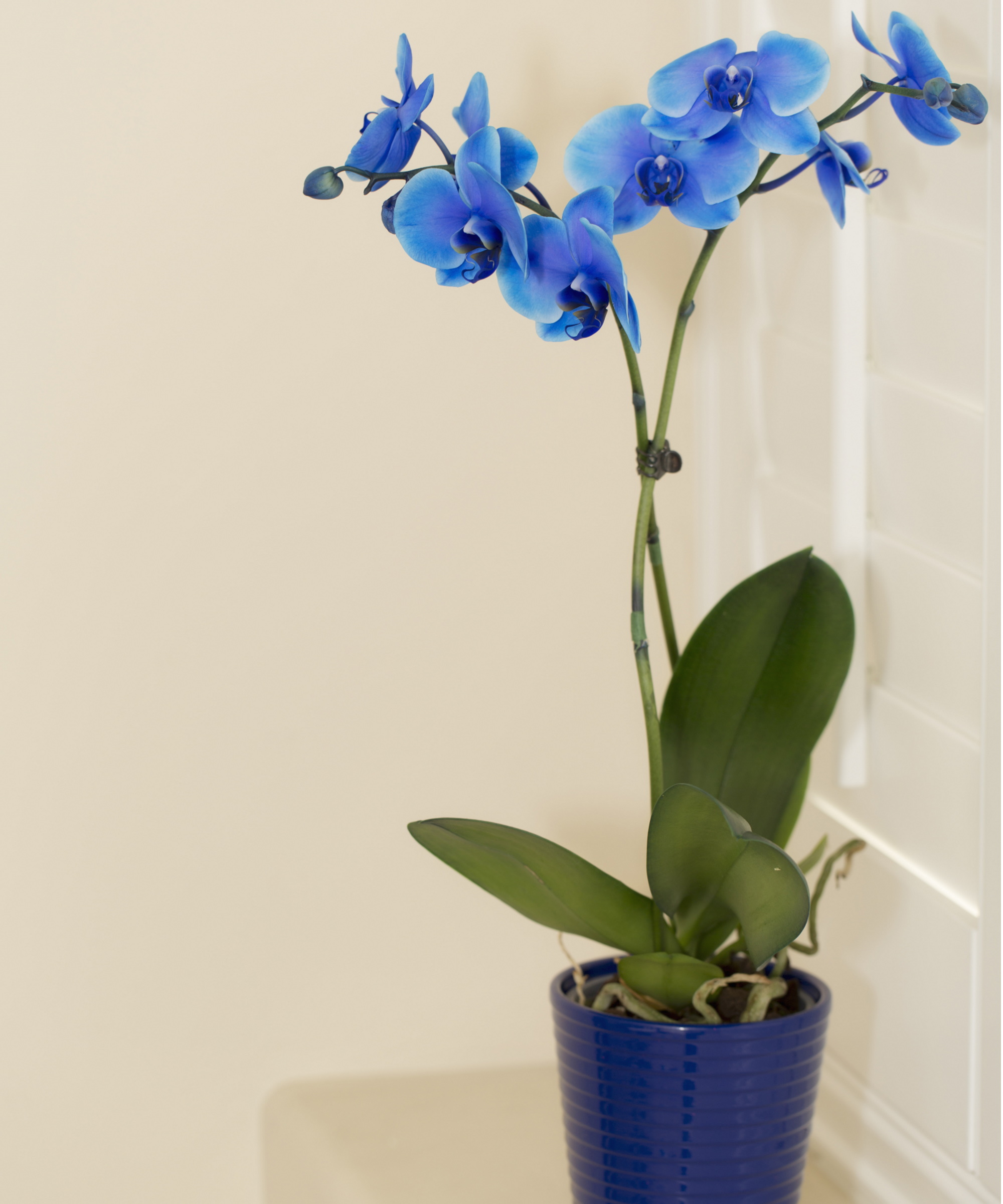
The color blue has long been associated with feelings of relaxation, which is why we often find it used in bedrooms to help with sleeping and in garden design for wellbeing spaces. Color psychology tells us that it stems from nature.
'This calming effect can be attributed to its associations with elements of nature, such as the sky and the sea, which are typically perceived as tranquil and vast spaces,' says Niloufar Esmaeilpour, a clinical counsellor and founder of Lotus Therapy & Counselling Centre.
In fact, exposure to blue hues can lower heart rates and encourage a state of mental relaxation.
'The color blue is believed to evoke feelings of stability, tranquility, and peace, making it a powerful tool in reducing stress and anxiety,' Niloufar adds.
When it comes to indoor gardening, you can achieve this sense of serenity by opting for blue houseplants.
'The act of caring for plants and witnessing their growth fosters a sense of accomplishment and nurturance,' says Niloufar. 'Consider adding blue-flowering houseplants and incorporating elements of blue through decorative pots or backgrounds.
'Positioning these plants in areas where relaxation is desired, such as bedrooms or study spaces, can help in creating a serene ambiance,' she adds.

Niloufar Esmaeilpour is a registered Clinical Counsellor with the BC Association of Clinical Counsellors and the founder of Lotus Therapy & Counselling Centre located in Vancouver, Canada. Niloufar brings forth a profound wealth of experience and an unwavering commitment to assisting individuals along their journey towards healing and overall wellbeing.
Best blue houseplants
You can create a tranquil indoor garden by choosing plants with blue hues. Many of them are unique and will also add striking interest to your houseplant displays. Here is our list of the best blue houseplants to evoke calm feelings.
Blue kalanchoe

Kalanchoe plants are beautiful indoor flowering succulents that bloom early in spring.
They have rubbery leaves and are native to tropical climates, such as Madagascar, so the prefer warmer temperatures between 55-75°F to encourage blooming.
'This succulent features blue-gray leaves and small clusters of colorful blue flowers. It is a low-maintenance plant that thrives in bright light and well-draining soil,' says Autumn Hilliard-Knapp, houseplant expert from Perfect Plants.
Blue kalanchoes will bare clusters of deep blue flowers and their compact nature make them ideal for a pop of color on windowsills and coffee tables.

Autumn is a horticulture specialist and marketing professional at Perfect Plants Nursery. With four years of experience in the horticulture industry, she has developed a passion for helping people create beautiful indoor and outdoor spaces to enjoy. Her expertise in horticulture encompasses a broad range of activities, including plant care and selection, landscape design, and maintenance.
Blue star fern
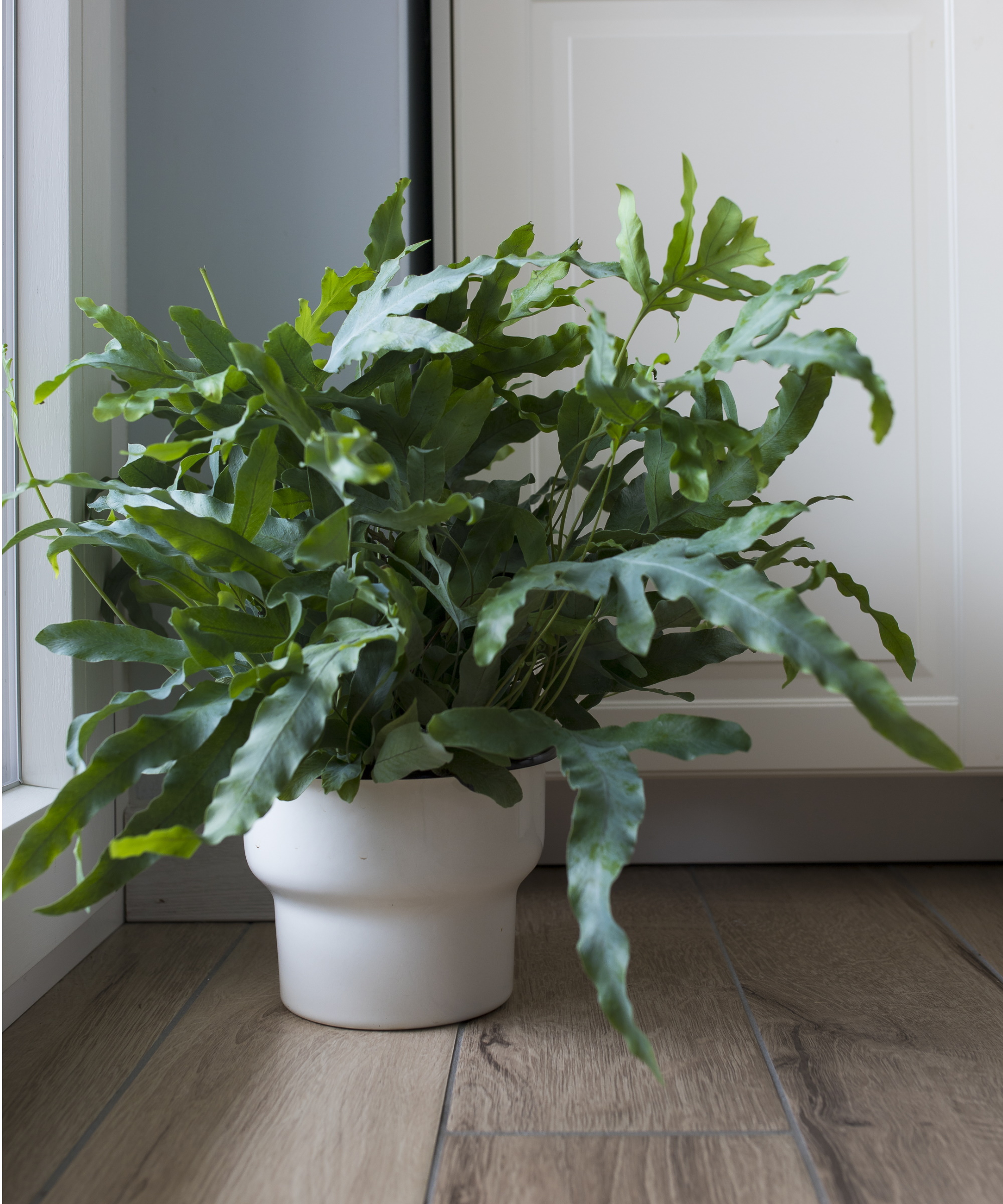
Indoor ferns are a long-standing favorite among houseplants lovers for their beautiful foliage that adds a jungle feel to interiors.
The blue star fern, or Phlebodium aureum, is a creeping plant that has muted blue-green colored fronds. It can grow up to one meter tall if you let it and is a great floor plant to add leafy structure to your home.
They're easy to care for and are among low light plants that tolerate shadier corners of the home.
Although, it is a good idea to regularly mist these ferns as they enjoy high humidity and it can help keep their foliage brighter and bluer in appearance.
Blue moth orchid
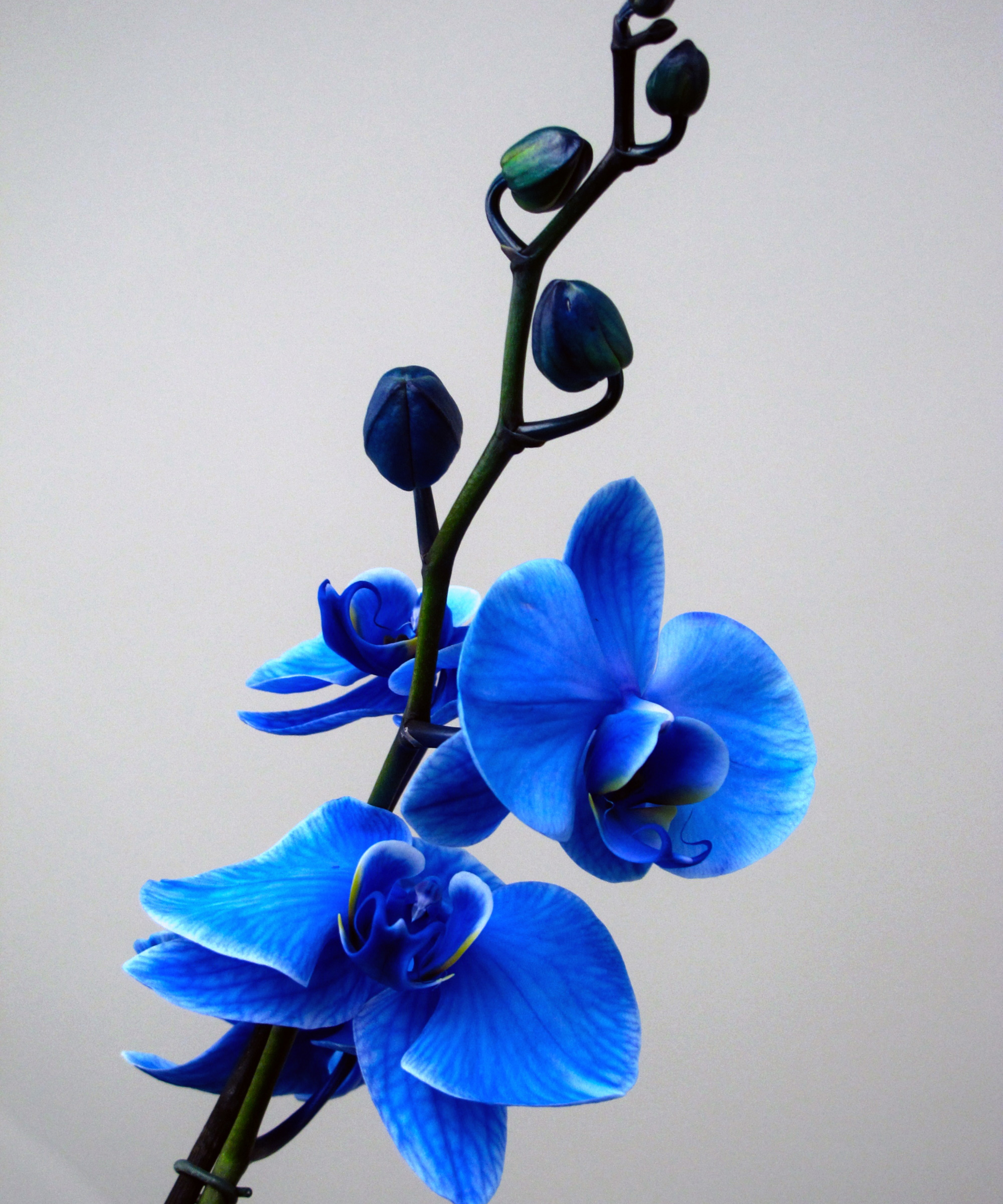
Moth orchids, or Phalaenopsis, are eye-catching flowering indoor plants that have delicate, exotic blooms. It's no secret that they come in a range of colors, making them versatile too suit any interior aesthetic.
'The blue variety of this orchid adds a unique and soothing color to indoor spaces,' says Autumn. 'Most blue orchids are not naturally occurring. They are white orchids that have been dyed,' she adds.
Even though many blue moth orchids are dyed in color, they do offer striking blooms perfect for bright spaces.
'Place it in bright, indirect light, water when the top few inches of soil are dry, and providing high humidity,' says Autumn.
Orchids are notorious for being high maintenance, so take care to water your orchid correctly otherwise it could lead to it wilting or the stem turning yellow.
Echeveria ‘blue star’
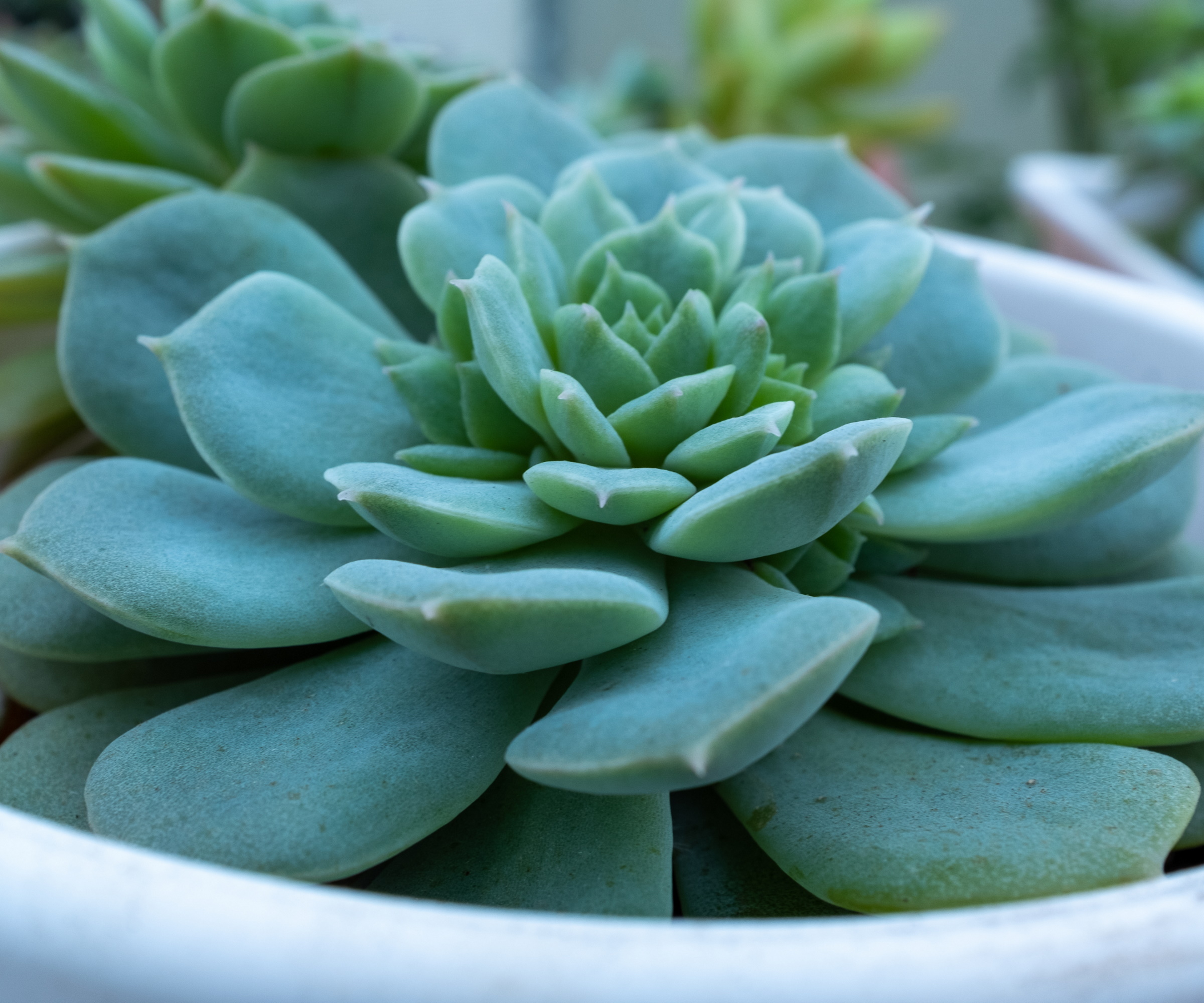
If you're after something more low maintenance, there are lots of succulents with blue hues that don't mind being left alone.
'Echeveria ‘blue star’ is a succulent that has blue-green rosettes that create a calming and serene atmosphere,' says Autumn.
Leaf shape can also have an impact on evoking emotion. 'Specific leaf shapes can evoke feelings of calm, with rounded, soft-edged leaves often being perceived as more calming than sharp, spiky leaves,' says Niloufar Esmaeilpour.
Round rosettes on succulents, like echeverias, provide a beautiful shape that can enhance the soothing effect of the plant.
'Water only when the soil is dry and be especially careful to avoid overwatering,' says Autumn. Knowing when to water succulents is important because they can be prone to incorrect watering, leading to yellowing or dropping leaves.
Bromeliad 'blue tango'
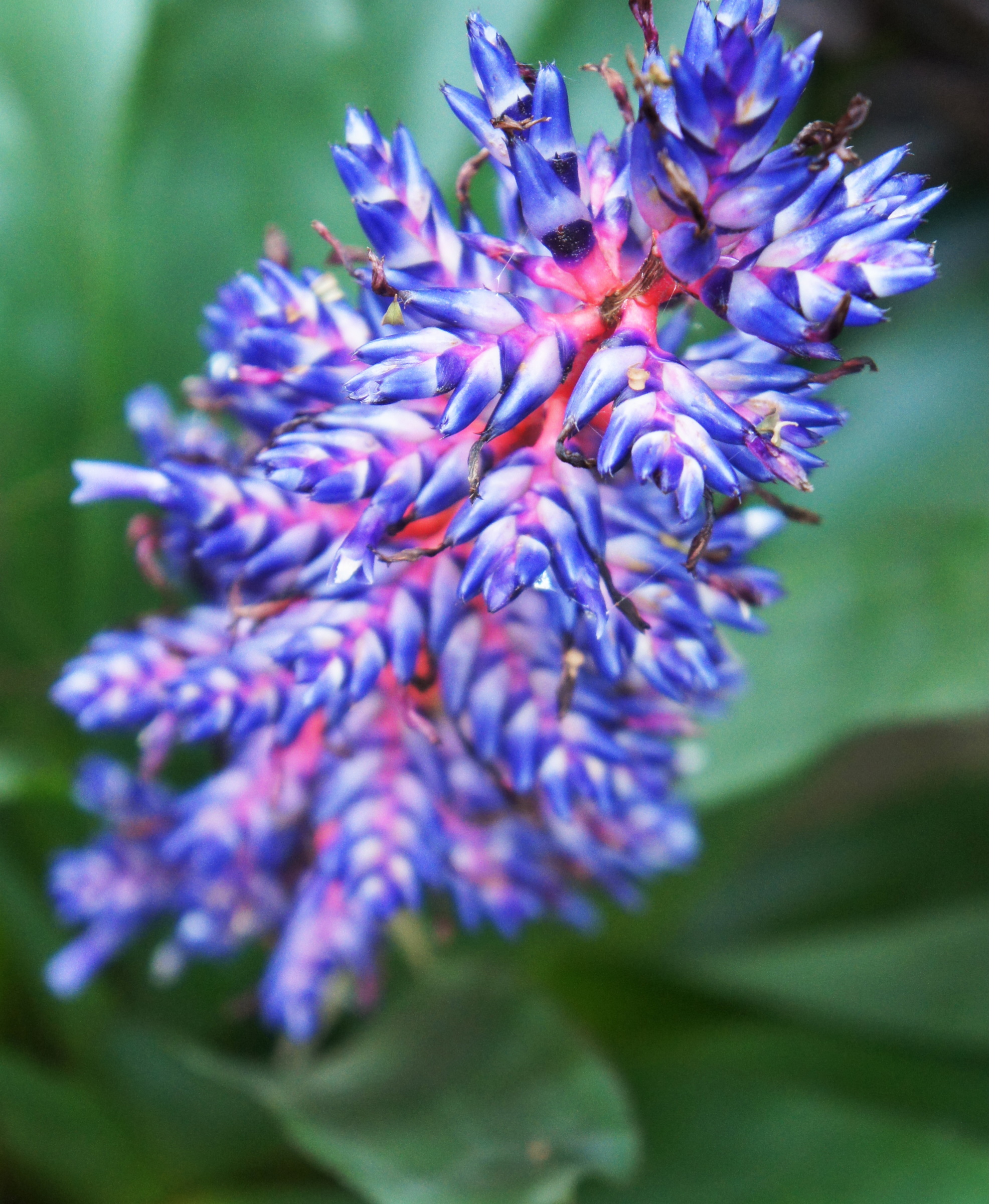
Bromeliads are conversation starters for their vibrant colorful flowers and lush foliage.
Bromeliad Aechmea 'Blue Tango' has a unique appearance with electric purple-blue, spikey flowers and hot pink stems. It can be grown outdoors in US hardiness zone 11, but it also does well as a houseplant to be enjoyed as part of an indoor garden.
Bromeliads are native to Brazil and do best in warmer room temperatures above 65°F. They are will flower for a long time, offering their stunning blue display for many months.
'This bromeliad has a water tank, the center area created by overlapping leaves, which needs to be filled with water every week. As water cups tend to collect debris, empty out each week and add new water,' says Paris Lalicata, head of plant education and community at The Sill.
Bromeliads only flower once in their lifetime, so don't be disheartened if you don't have returning blooms.
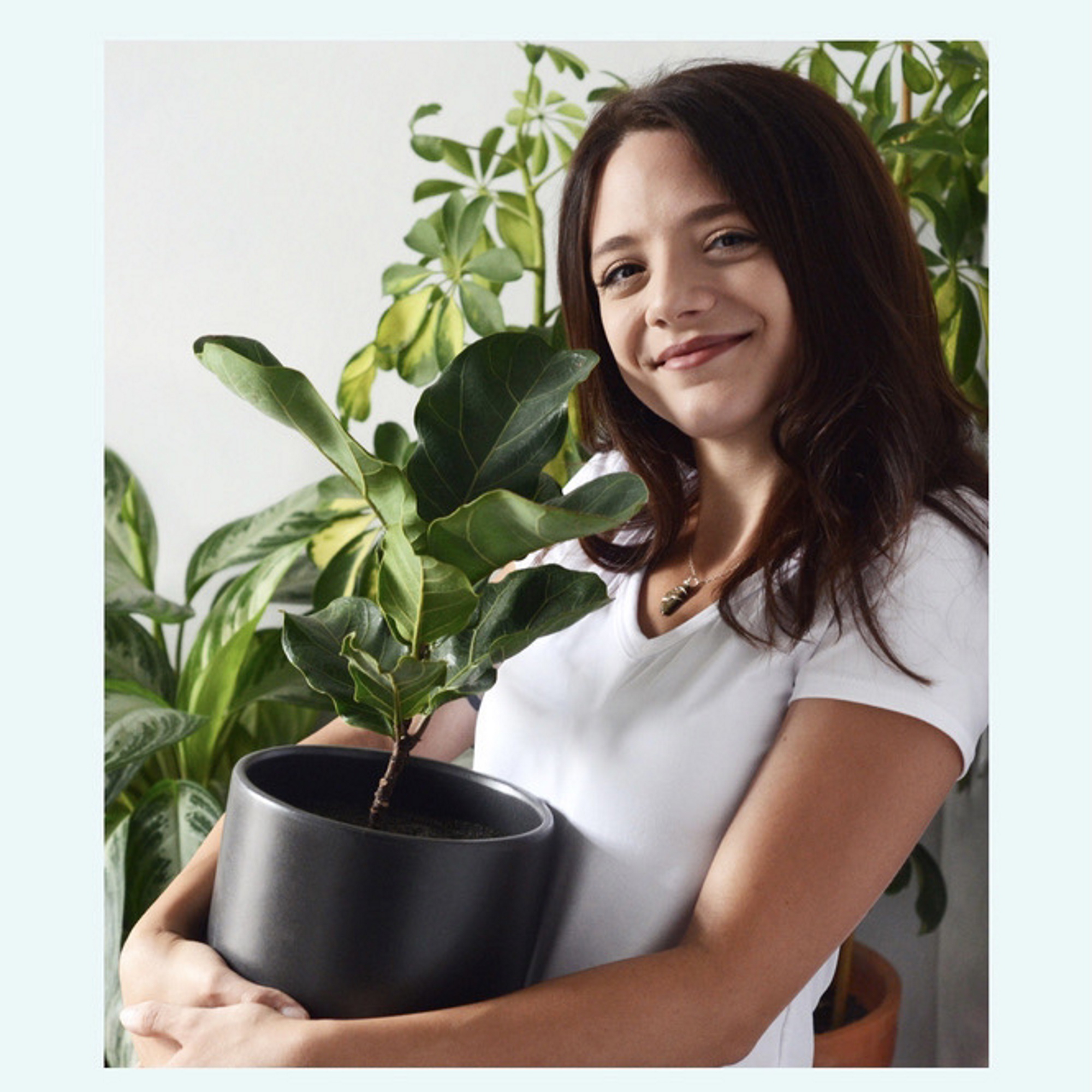
Paris has been at The Sill for five years, looking after Plant Education and Community. She is a self-taught plant expert with over ten years of experience growing houseplants and is currently working on becoming a certified sustainable gardener. She maintains an indoor garden of over 200 plants in the north-east of the USA and is passionate about making plant care more digestible for budding plant parents.
Shop blue plants online
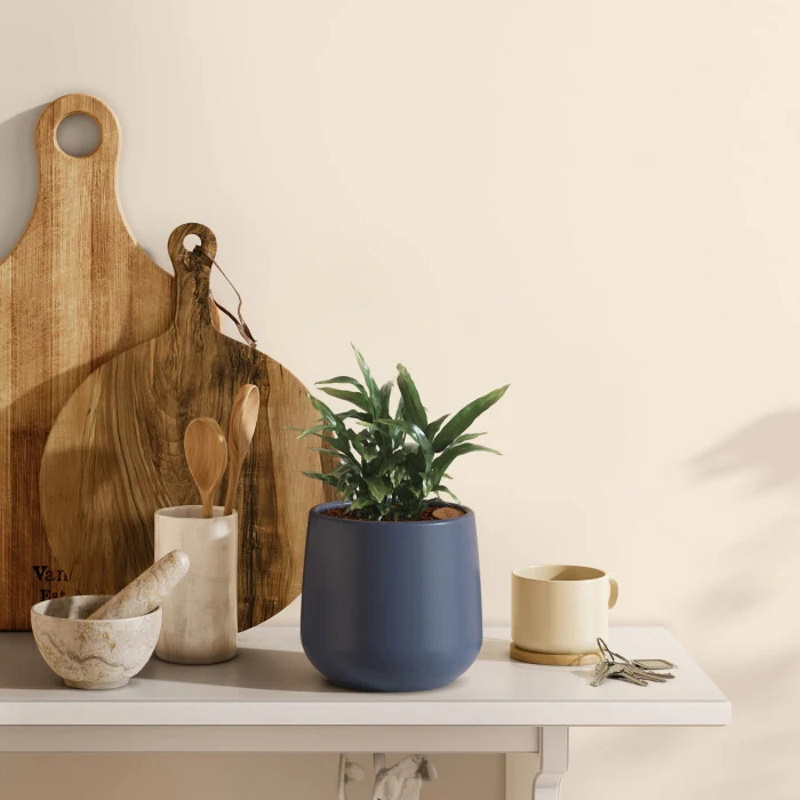
This fern's distinct coloration and the lush, wavy texture of its leaves bring a relaxed and refreshing vibe to any indoor space.
FAQs
How can you incorporate blue in the backyard?
In color psychology, blue is thought to evoke feelings of serenity thanks to associations with natural elements like the sky and water. You can create a calm backyard by incorporating blue hues, whether its by growing blue-flowering plants like agapanthus and hyacinths, or by including blue furniture. Another lovely way to use blue in the yard is by introducing water features, like a pond or waterfall which can enhance sensory stimulation with sound and touch.
What other color plants evoke calm feelings?
Blue plants can help bring a sense of serenity to your home, but it isn't the only color plant to do so. Other cool tones, like greens, purples and whites, can help make your indoor space feel calm.
'These colors harmonize with blue, creating a soothing spectrum that encourages relaxation and tranquility,' says Niloufar Esmaeilpour, a clinical counsellor and founder of Lotus Therapy & Counselling Centre.
'Soft pastel colors can also complement blue tones, adding to the serene ambiance without overwhelming the senses,' she adds.
Many indoor flowering plants offer lots of different color blooms, so you can choose one that best suits the feeling you want to evoke.
Color theory in psychology tells us that we feel calm around the color blue thanks to associations to nature. Introducing unique, blue houseplants to your home not only adds eye-catching interest but can also help to create an indoor garden for relaxation. In contrast, red houseplants can uplift and energize our spaces. There is a lot of research around gardening for wellbeing, and bringing plants into your home can play a big role in green therapy.
If you are considering how to grow blue flowers outdoors in the backyard, read our guide for a full list of extraordinary blue blooms.
Sign up to the Homes & Gardens newsletter
Design expertise in your inbox – from inspiring decorating ideas and beautiful celebrity homes to practical gardening advice and shopping round-ups.

Tenielle is a Gardens News Writer at Homes & Gardens. She holds a qualification in MA Magazine Journalism and has over six years of journalistic experience. Before coming to Homes & Gardens, Tenielle was in the editorial department at the Royal Horticultural Society and worked on The Garden magazine. As our in-house houseplant expert, Tenielle writes on a range of solutions to houseplant problems, as well as other 'how to' guides, inspiring garden projects, and the latest gardening news. When she isn't writing, Tenielle can be found propagating her ever-growing collection of indoor plants, helping others overcome common houseplant pests and diseases, volunteering at a local gardening club, and attending gardening workshops, like a composting masterclass.
-
 Ina Garten's storage pantry is an insightful window into all of the best cookware used by the chef – and it's easy to recreate on your kitchen shelves from $48
Ina Garten's storage pantry is an insightful window into all of the best cookware used by the chef – and it's easy to recreate on your kitchen shelves from $48The beautiful dishware in The Barefoot Contessa's Hamptons pantry showcases the tools she uses most often to cook – this is exactly how you replicate it
By Sophie Edwards Published
-
 Extend the lifespan of your appliance with 5 simple but crucial washing machine maintenance tips
Extend the lifespan of your appliance with 5 simple but crucial washing machine maintenance tipsFrom cleaning the filters to keeping the door open, experts reveal the washer tips they swear by
By Andy van Terheyden Published
